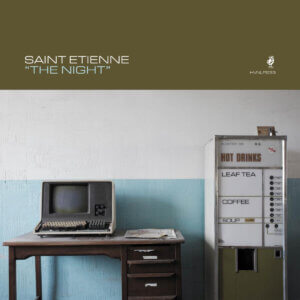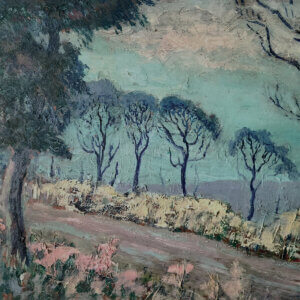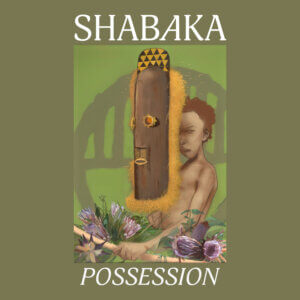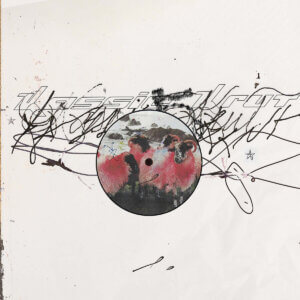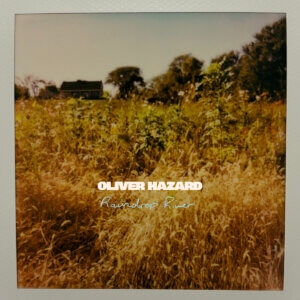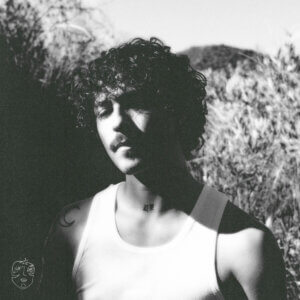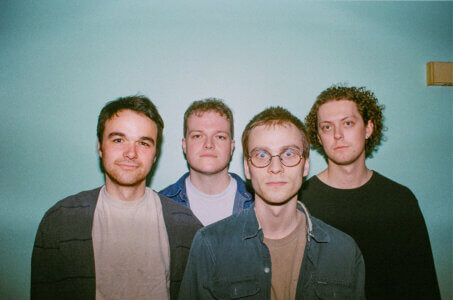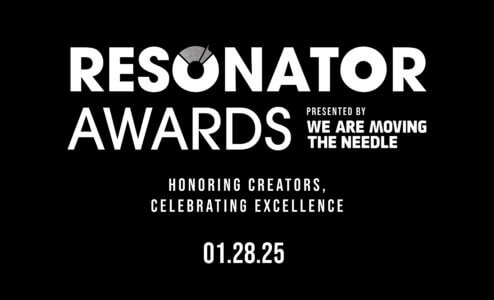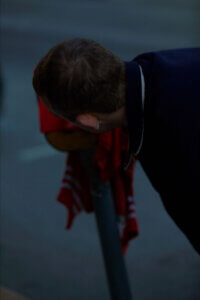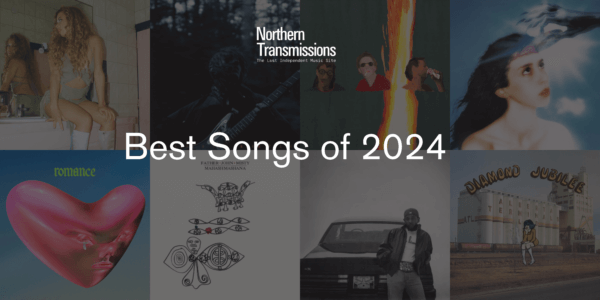Interview With Loscil
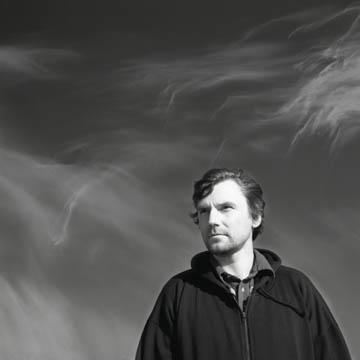
We continue with our series of interviews by Nic Bragg. Photo by Mark Mushet.
From the opening tones of Khanamoot, which leads off Scott Morgan a.k.a. Loscil’s hypnotic new album Sketches From New Brighton, the listener is instantly transported to a different sense of space – a rich sonic landscape built and arranged from the electro-acoustic sounds recorded out in the field. These dazzling ambiances, which Loscil weaves together employing elements from dub, glitch and IDM into an aural feng shui, have become made Morgan not only highly revered within contemporary experimental electronic circles, but also one of the more elusive artists on the scene.
NB: I feel that not a lot of attention has been given to your rigorous background in electro-acoustic studies. Yet, I see that it figures directly in your field recording project – New Brighton Field Study. Can you briefly detail your background, how you came to this work, as well as how these ideas shape the rest of Loscil cannon.
SM: I was introduced to the concept of field recording while at SFU in the 90’s… I worked briefly on the Vancouver Soundscape Project which was connected to the World Soundscape Project started by R. Murray Schafer. I also went on to do film and game sound design so field recording is something I do regularly for personal enjoyment and a profession. Soundscape listening and capturing is central to my work as loscil. Soundscapes are interesting in the sense that most of us don’t pay attention to them day to day – they are very much “ambient” and in the background of our listening. But we hear them and they affect us. Being attentive and conscious of those background sounds takes a certain kind of active listening; an analysis and interpretation of the sounds and, for the most part, an enjoyment of them. I think these two forms of listening are what my music is all about – it is effectively a background and can be used as wallpaper but it also rewards the attentive listener with subtleties and minute changes.
NB: What was the thinking behind deciding to make the field recordings a source material available for others to use if they wished?
SM: Mostly it’s just for fun – but I think there is a bit of a reveal happening as well. I wanted to lift the curtain a bit and share the inner working of my process both in terms of sound collection and also in terms of the influence of “place” on my work. New Brighton is a great example to me of a place that has it’s own feel and it’s subtle and it’s odd and it is rich in terms of acoustic complexity being a blend of oceanside park and industrial hub.
NB: I have always had an uneasy relationship with academia as it relates to the arts. During your studies, did you ever feel at odds with creating music strictly for an audience of Professors and Students? If so, did it drive your desire to engage the popular?
SM: Yes. I think so. I was very inspired by school and learning but the insular feeling of being away in a corner studying and playing music for other students does get to be a bit much. Having played in rock bands during that time, I felt like loscil was a natural incarnation of those two worlds colliding – something that had a foot in the experimental, academic world and a foot in pop culture. Each one was a nice escape from the other as they both have their issues.
NB: Your records all convey a sense of place. Vancouverites will recognize the landmarks in your pieces. I am curious to hear what role if any place and geography have in your craft?
SM: I touched on this already, but yes, place is very important to me. I’m inspired by places, particularly places I inhabit – not just places I visit. I think there is something to a place that takes time to understand. You have to be in a place for enough time to appreciate it. Again, I think this is very true of the music I make. It turns off a lot of impatient listeners. You need to be in the music for a while to enjoy it. Or maybe not. But ya, fundamentally ambient type music is really about environment. The reverbs and echoes often used are really imitations of spaces – usually large expansive spaces, sometimes cavernous ones, sometimes larger than life, but they are spaces nonetheless. Most of my works somehow touch on this, even if it’s subconscious.
NB: Can you describe the mental work that comes before starting work on a new record? What is your process even before you begin to gather sounds and work up the track?
SM: This varies. Some albums are not started as a collection at all. Some are very preconceived. For some the theme or idea comes before I start working on the music and others it doesn’t come until the end. My process is a very loose one and it’s very organic and generally unstructured for at least part of the creative process. I am very inspired by sounds and creating a “library” of sounds to work with is usually how I begin. Finding these sounds might be accidental or it might be intentional. The collection of sounds might bear some relationship or they might be completely disparate. But once they are a collection, they end up getting weaved into sequences and compositions which become the pieces. Some take me days to complete, some take months.
NB: If you were forced to identify a historical hay-day ambient music, when would it be?
SM: It would be pretty hard not to answer the 70’s when Basil Kirchin, Harold Budd and Eno were making music but I think the groundwork for their works had already been laid my avant-garde composers like Cage and Feldman, etc. Everything that comes after and calls itself “ambient” (a troubling label to say the least) is really spawned from that tradition… in my view.
NB: I sense that dub and clicks and cuts are slowly returning in favour. I have always had a hard time determining what influence the two have played in your creative process. Can you speak to this?
SM: Dub is something I constantly return to. I think there is something magical about early dub. It is music made out of true invention, creativity and experimentation but is made with people in mind as well… and the bass. It just sounds so good. Glitches and bad edits and lot fidelity sounds and such have also always interested me. I like the idea of building my own “broken” devices in Max/MSP – tools that do things a commercial tool would never do. I believe I seek out imperfections because working with computers is otherwise perfect. You almost need to inject accidents and low fidelity in order to keep the music honest. Otherwise it is headed towards a mechanized perfection that I don’t like the sound of…
NB: When you sit back and compare the instrumental version of The Making of Grief Point with the more recent Dan Bejar spoken word version, what runs through your mind? How dominant an element is language and the human voice?
SM: Personally I prefer the version with Dan’s vocal but a lot of listeners instantly rejected that track. The voice changes the music completely. The music becomes more of a soundtrack and I think a lot of people find this difficult to adapt to after a bunch of instrumental tracks than have put you into another distant place. The voice snaps your brain into a new form of listening and, therefore, can have the tendency to break the hypnosis. Language itself has a beautiful rhythm and I think Dan’s voice and words are themselves quite eloquent and hypnotic but it is definitely a bit jarring.
NB: You have collaborated with other performers in a live setting in the past – including most recently with a pianist at Seattle’s Substratafest – how invigorating is it for you to combine the Loscil tones with other performers?
SM: Very much so. While I do enjoy playing solo from time to time, getting to collaborate with a performer really can inject something new, fresh and lively to the set. A live dynamic between people is far more interesting for certain audience members though it’s certainly not essential.
NB: Stefan Betke (of POLE) recently has been quoted as saying “I think you can “play” the computer like Hendrix played guitar”. How does one improvise and explore with digital instruments including the macbook?
SM: The problem with the computer, in my opinion, is its seemingly limitless ability. The guitar is ironically freeing in its limitations. You need to really push its boundaries to be expressive. The computer’s boundaries these days with the myriad of software available make it very difficult to focus which, in part, makes it hard for many people to find a voice with which to express themselves. My specific, self-imposed limitations are also the things I use the most as live tools. Sticking to a certain predetermined set of sounds and deciding when to sequence them, mix them, filter them, echo and reverberate them – these are the tools of dub really, and they are the go to conventions when performing live for me.
NB: You seem very selective about which live engagements you agree to. Is this more about logistics or a strategy?
SM: A bit of both. I consider myself very lucky to be part of an international community of likeminded musicians and music lovers who are very active and engaged and end up inviting me to take part in things. I also have had some limitations with regard to work and family which I believe have held me back from doing more in the way of touring and such. This may be changing though.
NB: Your previous records are sometimes called concept albums. What concepts are at play on Sketches from New Brighton? How important is working within a conceptual framework?
SM: The concept is simply the place and the role of place in the creative spark of an artist. Instrumental music is largely very abstract and while I appreciate this abstract quality, I’ve always enjoyed superimposing themes onto the presentation to ground the music in something real. I suppose it’s a kind of programme music that gives us something to talk about as otherwise, we are talking in very abstract terms.
NB: Finally please tell me more about City Hospital and Malcolm Lowery?
SM: It was a project that came about through the WistRec label of Ireland. They had a series of “book reports” by various other composers and asked me to take part. Each book report is presented as a 3″ CD “soundtrack” provided with the book. I was permitted to select a book from the remaining, available Penguin mini-classics and when I saw Malcolm Lowry’s Lunar Caustic was available I snatched it up. As you know, Lowry is a bit of a local hero in these parts for his stay here. The book was immediately sonically inspiring with lots of descriptive references to sound including the main character being a pianist. There was a reference to him playing Death of Ase by Edvard Grieg from within the asylum he was residing in and this really grew to be the centrepiece of my soundtrack to the book. I performed this whole piece in Seattle at the Substrata festival with local pianist Kelly Wyse and will likely be repeating this set at Decibel very soon. As the original series is sold out, I will also be recording this set live with Kelly while down in Seattle later this month in hopes of releasing it digitally. WistRec is also exploring a Lowry special issue that may include both versions of the piece.
http://www.kranky.net/artists/loscil.html
Latest Reviews
Tracks
Advertisement
Looking for something new to listen to?
Sign up to our all-new newsletter for top-notch reviews, news, videos and playlists.
